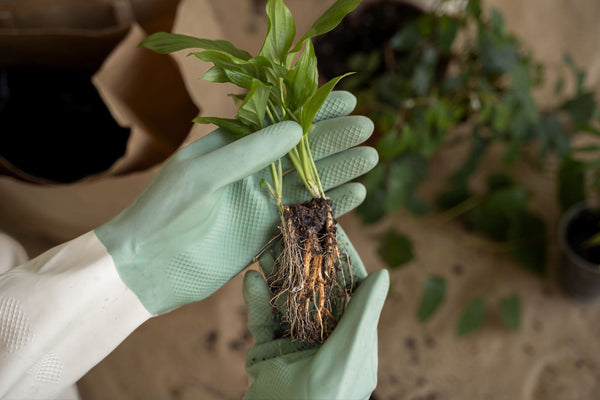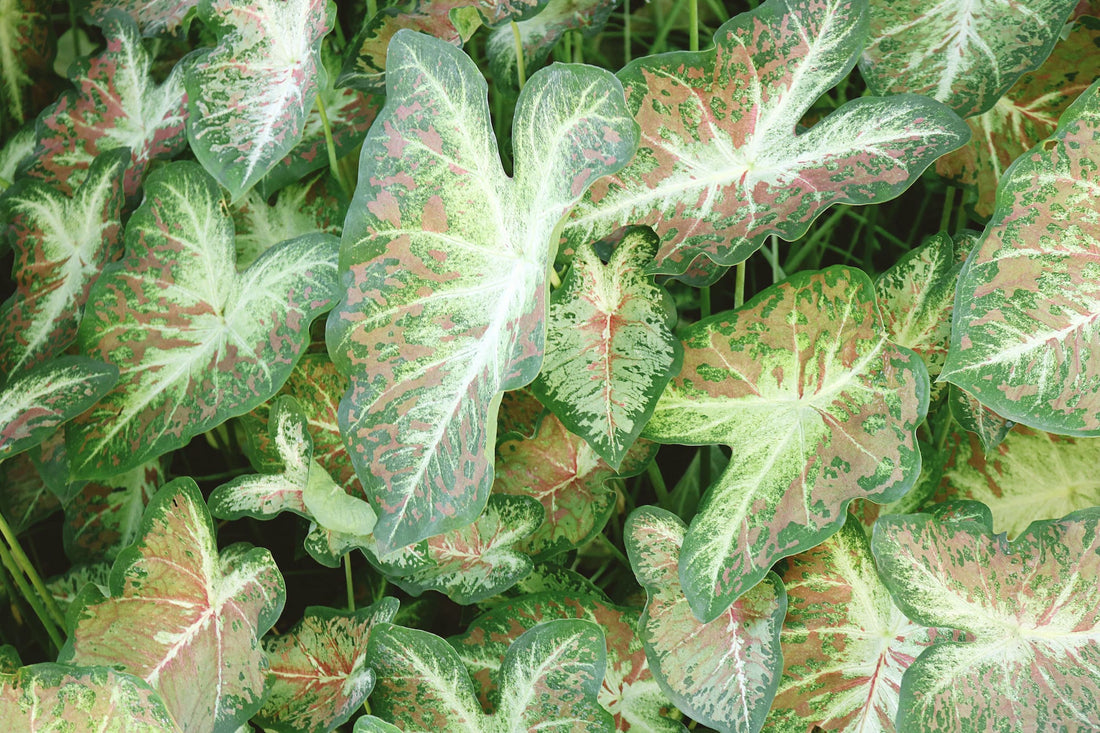Houseplants do not only function as decorative elements, but play a crucial role in our emotional and physical well-being in our own homes. They improve air quality, increase humidity and create a calming atmosphere. Watching them grow and caring for them contributes to a positive feeling, which is invaluable, especially in urban environments. Therefore, maintaining the health of our houseplants is not only an aesthetic matter, but also contributes significantly to our daily well-being.
Despite their positive influences, houseplants are susceptible to various diseases and pests that can threaten their beauty and viability. These challenges range from fungal diseases to pests like aphids to invisible dangers like root rot. To maintain the joy of healthy houseplants, understanding the most common causes of disease and their signs is crucial. In this article, we'll dive deep into the world of houseplant diseases to help you provide the best care for your green roommates and preserve their beauty.
causes of plant diseases
The development of diseases and pests in houseplants is often due to various causes. A conscious understanding of these factors is crucial to take preventative measures and promote plant health.
Entry of pests through contaminated soil or plants
The quality of the soil and plants that we grow in our homes plays a crucial role. Contaminated soil or already infected plants can introduce pests and vermin into the environment. It is therefore advisable to pay attention to the origin and health of the plants when purchasing houseplants. Transplanting into fresh, high-quality soil can reduce the risk of pest transmission.
Unsuitable site conditions and care errors as a promotion of pest infestation
Houseplants need optimal conditions to thrive healthily. Incorrect conditions, such as an incorrect location, insufficient light, excessive watering or water/nutrient deficiency can increase susceptibility to pests. By carefully selecting the location and providing appropriate care, we can sustainably improve the well-being of our houseplants and prevent disease in houseplants.
Plant cells and their susceptibility to pathogens
The microcosm of plant cells is a crucial aspect that significantly influences the health of houseplants. The cells are not only the building blocks of the plants, but also potential points of attack for pathogens. A disturbed cell structure can be a cause of illness in your plant, as it inhibits its resistance.
Special attention should be paid to possible damage to the cells, whether caused by external influences such as improper care or the penetration of pathogens. Regular inspections for signs of cell damage can provide timely indication of potential causes of plant diseases.

Detecting and Treating Houseplant Diseases
The health of houseplants can be affected by various diseases. Early detection of symptoms is crucial to implement targeted treatment strategies and protect the plants.
powdery mildew
Powdery mildew, caused by fungi of the genus Erysiphales, is a widespread plant disease that often affects houseplants. The characteristic white, powdery coatings form on leaves and stems, impair photosynthesis and lead to leaf deformation. This fungus is particularly prevalent in warm, dry environments.
Symptoms and signs:
- White, powdery coatings on leaves and stems
- deformation of the leaves
- Yellow spots
Treatment strategies:
- Biological agents: The use of beneficial insects such as ladybirds can reduce the population of powdery mildew.
- Home remedy: Spray a mixture of water and baking soda on the affected areas to fight the fungus.
- Fungicides: Special fungicidal sprays can be effective in advanced infections.
downy mildew
Downy mildew, caused by fungal infections of the genus Peronosporaceae, is characterized by oily spots on the underside of leaves. This fungal infection spreads in high humidity and low temperatures. The infection leads to wilting, discoloration and affects general plant growth.
Symptoms and signs:
- Oily spots on the underside of the leaves
- Wilted and discolored leaves
- gray-brown mold layer
Treatment strategies:
- Improve air circulation: Ensure adequate ventilation to reduce humidity.
- Fungicides: Apply fungicides to stop the spread.
- Copper sprays: Spraying copper sprays as a preventative measure.
sooty mold
Sooty mold is a fungal disease that causes black-looking deposits to form on leaves. These deposits are often a byproduct of honeydew, a substance secreted by aphids. Sooty mold impairs photosynthesis and can hinder plant growth.
Symptoms and signs:
- Soot-like deposits on leaves
- leaf discoloration
- Reduced photosynthesis
Treatment strategies:
- Mechanical removal: Carefully wipe off the soot deposits with a damp cloth.
- Improve ventilation: Good air circulation helps prevent honeydew and thus sooty mold.
- Fungicides: In severe infections, special fungicides can be used.
gray mold, gray mold rot
Grey mould, caused by the fungus Botrytis cinerea, often occurs in damp conditions and mainly attacks dead plant parts. This fungus leads to wilting, rotting plant parts and a characteristic grey mould coating.
Symptoms and signs:
- Gray mold formation on leaves and stems
- Wilting and rotting plant parts
- Unpleasant smell
Treatment strategies:
- Removal of infected parts: Cutting off and disposing of infected plant parts is crucial.
- Promote dryness: Targeted watering can reduce humidity and combat gray mold.
- Fungicides: Special fungicides against Botrytis cinerea can be used.
root rot
Root rot is caused by various fungi such as Phytophthora and affects the roots of the plant, resulting in yellow leaves, limp plants and a foul smell from the roots.

Symptoms and signs:
- Yellow leaves and limp plants
- Rotten smell of the roots
- Rotten roots
Treatment strategies:
- Transplanting into fresh soil: Replacing the old soil with fresh soil promotes the recovery of the plant.
- Reducing watering: Controlled watering prevents waterlogging and promotes root recovery.
- Fungicides: Special fungicides against root rot can be used.
leaf spot disease
Leaf spot disease is caused by fungi such as Alternaria spp. It manifests itself through characteristic spots on the leaves with yellow edges. High humidity promotes the spread.
Symptoms and signs:
- Characteristic, bordered spots on the leaves
- Yellow edges around the spots
- General leaf discoloration and leaf spots
Treatment strategies:
- Removal of infected leaves: In case of an infestation, it is advisable to remove infected leaves to contain the spread.
- Fungicides: The use of suitable fungicides can be an effective measure in advanced infection.
- Improve ventilation: By improving ventilation at the site, humidity can be reduced and thus the spread can be inhibited.
chlorosis
Chlorosis is characterized by yellowing of the leaves between the veins, which indicates a lack of chlorophyll. A pH value outside the optimal range can promote this disease.
Symptoms and signs:
- Yellowing of the leaves between the leaf veins
- Reduced chlorophyll production
- leaf veins remain green
Treatment strategies:
- Iron or nutrient fertilizers: To treat chlorosis, iron or nutrient fertilizers can be added to compensate for the deficiency.
- Adjust pH: Controlling and adjusting soil pH to the optimal level supports nutrient uptake.
- Regular fertilization: Regular fertilization with a balanced mix of nutrients helps to improve the health of the plant.
aphids
Aphids are sucking insects found on leaves and shoots. They cause deformed leaves and leave behind a sticky honeydew residue.
Symptoms and signs:
- Small, sucking insects on leaves and shoots
- Crippled leaves and deformed plant parts
- Sticky honeydew residue
Treatment strategies:
- Promote natural enemies: Promoting natural enemies such as ladybugs can help control aphids biologically.
- Soap solution: A mild soap solution is suitable as a natural insect control by killing the aphids.
- Neem oil: When applied to the affected areas, neem oil also acts as an effective insecticide against aphids.





